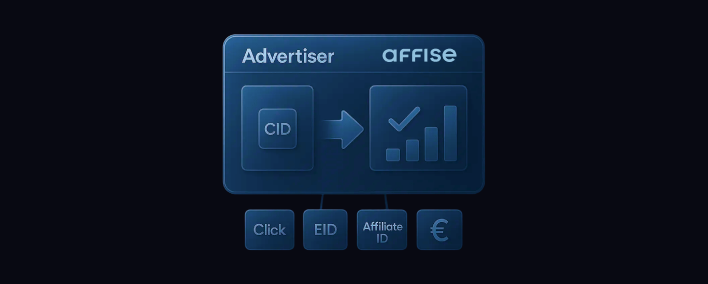- Blog
- Tips & Guides
- How to Make The Most Out of EPC in Your Affiliate Marketing Campaign
How to Make The Most Out of EPC in Your Affiliate Marketing Campaign
Affiliate Marketing isn’t something entirely new. As with anything else, though, it is now a crowded field. Tailoring and customizing content to a niche network of engaged viewers is a skill that not everybody has.
And getting started in this area can be tricky. Whether you’re an established market player that is looking to rejuvenate your stagnating fortunes, or a newcomer to the game eager to make your mark, the tips found below should stand you in good stead to make the most out of your affiliations through something known as EPC.
What Is EPC and Why Does It Matter?
EPC is an acronym that stands for earnings per click — not to be confused with the equally important CPC (cost per click). CPC is a better known metric, which refers to the amount an advertiser pays each time someone clicks on an ad run on an online platform.
EPC, on the other hand, refers to the income you earn each time someone clicks on one of your affiliate links. In short, EPC shows how much you could earn through affiliating with particular firms or products.
The formula for calculating your EPC is pretty straightforward:
Total Amount of Commissions / Number of Clicks Obtained by the Affiliate Link = EPC
So, let’s say you earn $100 from a link that was clicked on ten times. Your EPC would stand at $10 ($100 / 10).
While CPC is an important indicator in understanding the profit margins of a marketing campaign, EPC is the figure that you should be focusing on. After all, we want to make money from this venture, right? In business terms, the higher the EPC offered by affiliate programs, the higher your turnover will be. And the lower — in relation to your EPC — your CPC is, the greater your eventual profit.
When laid out like this, it can be easy to assume that hunting down the largest EPC figure you can is the best way forward. Collaborating with the brand — much like using the different collaboration softwares that the pandemic has introduced to us — can seem like a great idea.
But this isn’t always the case. Finding which brands you can best deliver with (based on your expertise), and your adaptability as a marketer, are also key things to understand.
Throughout this article, we’ll explain what your key considerations should be. These are the foundations by which any Affiliate Marketing Campaign should run. So if you’re ready and interested, let’s get started.

Tip #1: Keep Things Current
A lot of business success is the product of good timing. In some circles, this is the result of good fortune. But resigning it to be something that is just an avenue for the lucky is also a bit of a cop-out. Ensuring that the material that surrounds your affiliate campaigns is up-to-date in this fast-paced world of digital is essential.
Including links that ignore the time of year that you’re in because they have a high EPC rate is a mistake. For example, people don’t want to click on links referring to Christmas offers in the middle of June. You can write the best work imaginable, laying out your tale like a wordsmith-turned-storyboard creator, but your story isn’t relevant.
In this scenario, opting for an affiliate link which — if you’re in the Northern hemisphere — tells tales of sunny holidays, barbecues, and all that sun-drenched imagery is more likely to get a greater reaction, as it communicates the here-and-now to your audience more effectively.
Similarly, making sure that you understand your target audience by avoiding any references that they may not get is helpful. Some words and phrases are nation-specific, for instance, and wouldn’t mean much to a global audience. At best, you could leave your audience scratching their heads, at worst you might even cause offence.
Tip #2: Aim for the Best Fit
We said that not plumping straight for the highest EPC rate is to be advised, so this tip may seem a bit contradictory. But when we talk about “best fit”, what we mean here is ones with the greatest gap between EPC and CPC, as that leaves you with the greatest profit margin. This could mean a campaign that offers a small EPC, but costs you next to nothing to run, compared to a higher EPC that has a much higher CPC too.
All in all, evaluating the “worth” or “value” of myriad affiliate schemes is a difficult thing to weigh up. Added to the above equation should also be how “easy” it is for you to produce content that will achieve the number of clicks that you want.
Being part of an affiliate campaign that could make you hundreds of thousands in profit is all well and good — but you also need to be sure this is actually achievable, based on your content and tone, and the traffic that your site, page, or channel has.
Not taking account of this can lead to a pretty costly failure. The only thing you can guarantee from the outset is that these campaigns carry a CPC that you will have to pay. So, best to make sure the EPC is worth it — and that the undertaking has the greatest potential to succeed before signing up.
Tip #3: Keep Track of Metrics to Cut Out Baggage
No marketing campaign can be called truly successful unless you know what it is you’re aiming for. Much like business call forwarding, unless it gets to where it needs to be, you aren’t making the progress you intended to. Before launching your affiliate marketing campaign, decide on the targets you want to achieve with it. And make sure you have the means to keep track of how well your campaign is doing as you go along.
Whilst being of obvious benefit in determining whether you’re on track to succeed, these analytics can often identify any particular issues that you’re having. Eradicating these shortcomings can help with the overall success of your campaign, so are not something to ignore.
There are programs out there that can keep track of these metrics for you. But ensuring that you return to these programmes regularly while the campaign is live is the most sure-fire way of overseeing your eventual success.

Tip #4: Include Affiliate Links Everywhere
This is the tip that is perhaps the most overlooked. People believe that overloading your visitors with links and ads is inherently a bad thing. And, when done in a manner that means the actual running of your site is hampered, then yes, it is. But this shouldn’t make you shy about including affiliate links anywhere and everywhere that you can. Having too much of a good thing, whether this be affiliate links, daily stand-up meetings, or campaigns to run, doesn’t have to be a negative.
Opportunities for this are almost endless. You can include affiliate links in emails, newsletters, descriptions under videos, and posts across a variety of social media sites. The point is that they shouldn’t be relegated to only on-site content or blog posts. Maximising the scope and reach of your affiliate campaign means utilizing every avenue open to you in order to deliver the results you want.
Conclusion
It isn’t entirely possible to run a marketing campaign online without at least some element of guesswork. For one thing, you never know what issues — industry-related or otherwise — can arise once a campaign launches. It can also be the case that customers don’t act in the way that you or your research expects them to. Embracing these things often leads them to becoming the new normal — just look at where remote working is as a concept now, compared to two years ago.
But this also doesn’t mean that failing to be strategic is the answer. The most successful marketing campaigns — affiliate or otherwise — are often the ones that make private strategizing look the most publicly seamless.
Preparing for your affiliate marketing campaigns by keeping to the tips above — whilst modifying them, depending on your unique circumstances — should be a good way to get started.
Written by
Affise Academy
Affise is a partner marketing platform for brands, advertisers and agencies to scale via all possible performance marketing channels. Synergy of technology and our long standing experience lets you expand your partnerships, automate every step of the campaign lifecycle and make data-driven decisions.
See all articles →

















